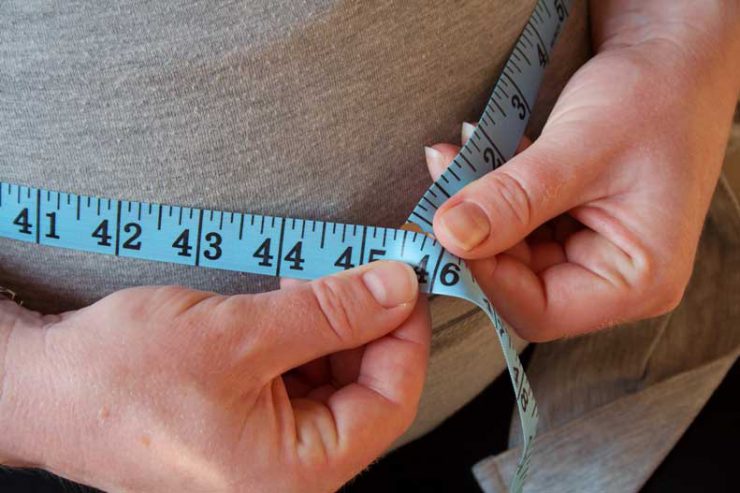What’s the link between your waistline and heart health?
While you’ve probably heard that staying at a healthy weight can help lower your risk for heart disease, you might be surprised to learn that where you carry your weight – for example, around your middle – can have a bigger impact on your heart than just the numbers on your scale.
Find out about the connection between your waistline and your heart and what you can do to lower your risks.
RELATED: Infographic: What Your Body Shape Says About Your Health
Never Miss a Beat!
Subscribe to Our HealthBeat Newsletter!
Thank you for subscribing!
You can now select the specific newsletters you'd like to receive.
You are already subscribed.
Subscribe to more newsletters in our email preference center.
Sorry, an error occurred. Please try again later.
Get Healthy Tips Sent to Your Phone!
What Is Healthy Weight?
Excess weight can raise your risk for many health problems, like heart disease, high blood pressure, and diabetes. But what does “healthy weight” mean? Healthy weight relates not only to the numbers on your scale, but also where you carry your weight in your body.
If you don’t have a scale at home, you can find out your weight at your doctor’s office. Once you know your weight, you can use it to figure out your body mass index, or BMI, which measures body fat according to your height and weight.
You can calculate your BMI by using this tool from the National Heart, Lung, and Blood Institute. Your BMI will fall into one of these categories:
- Underweight: Less than 18.5
- Normal weight: 18.5 to 24.9
- Overweight: 25 to 29.9
- Obese: 30 or greater
While having a healthy BMI is important, it’s also very important to pay attention to where you carry your weight, because different types of fat affect your health in different ways.
Being pear-shaped, or carrying your weight around your hips and thighs, does not affect your heart health the way that being apple-shaped, or carrying your weight around your waistline does.
The Waistline and Heart Health Connection
Visceral fat – the kind of fat around your waist – is linked to high blood pressure, high cholesterol, and insulin resistance, all of which raise your risk for heart disease. You can have a healthy BMI and still have too much visceral fat, depending on the size of your waistline.
To measure your waistline size, place a measuring tape around your waist, just above your belly button. Your risk for heart disease is higher if you have a waistline greater than:
- 40 inches for men
- 35 inches for women
Trimming Your Waistline to Help Your Heart
By making healthy choices in what you eat and how often you move, you can help not only reach or maintain a healthy weight, but also slim down your middle.
- Choose a healthy diet with plenty of fresh fruits and vegetables, whole grains, lean protein, and low-fat or fat-free dairy products.
- Read nutrition labels so you understand the amount of calories, fat, sugar, and sodium in packaged foods.
- Pay attention to serving sizes so you don’t go overboard on calories, fat, sugar, or sodium.
- Get 30 minutes of moderate-intensity physical activity at least five times per week. This can include brisk walking, dancing, gardening, playing with your kids, and other household activities that raise your heart rate.
- Add strength training – or exercising with weights – into your routine.
Before you start any new diet or activity plan, it’s best to talk with your doctor to make sure it’s safe for you.
To learn more, visit the UPMC Heart and Vascular Institute or call 1-855-UPMC-HVI (876-2484) or visit one of our Pittsburgh heart screenings to gain more insight into your health.
About Heart and Vascular Institute
The UPMC Heart and Vascular Institute has long been a leader in cardiovascular care, with a rich history in clinical research and innovation. As one of the first heart transplant centers in the country and as the developer of one of the first heart-assist devices, UPMC has contributed to advancing the field of cardiovascular medicine. We strive to provide the most advanced, cutting-edge care for our patients, treating both common and complex conditions. We also offer services that seek to improve the health of our communities, including heart screenings, free clinics, and heart health education. Find an expert near you.
